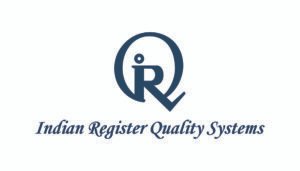Tag: Scope 3 emissions examples

What is Scope 3 Emission Accountability and Why Does it Matter?
What are Scope 3 emissions and why do they matter? Understand Scope 3 emissions and why tracking indirect carbon output is crucial for your business’s sustainability and ESG goals. Why Every Business Must Care About Scope 3 Emissions Climate change and sustainability are no longer just buzzwords—they are business imperatives. Governments, investors, and consumers are all demanding greater corporate responsibility when it comes to carbon emissions. While many companies have taken steps to reduce their direct emissions, there is one critical area that remains overlooked—Scope 3 emissions. If your company is serious about achieving true carbon neutrality, ESG compliance, and sustainability goals, you must understand Scope 3 emission accountability and why it matters. Unlike Scope 1 and Scope 2 emissions, Scope 3 covers indirect emissions that occur across your value chain, making it the most challenging—and impactful—part of your carbon footprint. In this article, we’ll break down: Let’s dive into why Scope 3 emissions are the missing piece of corporate sustainability and how your business can take action. What Are Scope 3 Emissions? Understanding the Carbon Footprint Framework However, let me first provide a brief overview of the three types of GHG emissions before delving into the issue of Scope 3 emissions and their responsibility and consequences. Why Scope 3 Matters the Most Scope 1 and 2 emissions are within the company’s control, while Scope 3 emissions account for over 70% of total emissions. This means that if companies do not include Scope 3 emissions, they are, in fact, not reporting their emissions at all. Why Is Scope 3 Emission Accountability So Important? Scope 3 emissions are also known as the ‘indirect emissions’ of a business. They are not included in the balance sheet, but they are very significant externally and for the firm’s sustainability. Below are the reasons why every company should begin to focus on Scope 3 emissions: Today, governments and regulatory authorities around the world are encouraging companies to report their carbon footprint, including Scope 3 emissions. New ESG rules and carbon reporting standards require companies to report and reduce them. Sustainability has become a standard criterion that investors use when investing in various projects. Shareholders also want companies to take responsibility for emissions not only in their own operations but also in the supply chain. Consumers are also becoming more environmentally conscious and prefer to purchase products from companies that are committed to sustainability. The management and reduction of Scope 3 emissions benefit companies that engage in the process. Those who do not achieve this are likely to lose customers, receive bad publicity, and miss out on investments. Reducing Scope 3 emissions can also enhance supply chain efficiency, reduce waste, and save costs. Companies that improve their logistics, switch to sustainable materials, and reduce energy consumption can cut both costs and emissions. Many companies have committed to achieving Net-Zero carbon emissions, but these goals are not very effective if Scope 3 emissions are not taken into account. For a company to be considered sustainable, it cannot afford to overlook the most significant portion of its emissions. How to Measure and Track Scope 3 Emissions? Scope 3 emissions are not under the direct control of the company, making them challenging to measure since they are not a direct result of the company’s activities. However, it is possible to track, report, and manage Scope 3 emissions if the right strategy is adopted by businesses. The first step is value chain mapping and the identification of all possible Scope 3 emissions. These may include: To gather emissions data, work with suppliers, vendors, and logistics providers. Emissions can be measured at each stage by using supplier questionnaires, industry reports, and LCA tools. The following are some of the global frameworks that can be used to assess Scope 3 emissions: Challenges of Scope 3 Emission Accountability However, businesses face several challenges when managing Scope 3 emissions: However, businesses that act now will reap the benefits in the future, which is why governments should encourage the use of renewable energy sources. The Future of Corporate Carbon Accountability With climate change becoming a reality and sustainability goals increasing, companies can no longer ignore Scope 3 emissions. Businesses that embrace full carbon transparency will be market leaders, while those that do not will fall behind. Below are some benefits businesses can gain from tracking, reducing, and reporting their Scope 3 emissions: Taking Action on Scope 3 Emissions For any organization that is keen on sustainability, ESG compliance, and long-term relevance, Scope 3 emissions cannot be ignored. Source identification, carbon footprint assessment, supplier engagement, and reduction measures are crucial for environmental conservation and organizational performance. Carbon accountability is not a concept of the future; it is already a reality, and your business must choose whether to lead the change or be left behind. To ensure compliance with global sustainability standards and improve corporate responsibility, businesses can seek expert guidance from certification bodies like IRQS, which provides sustainability assessments and auditing solutions to help organizations achieve their carbon neutrality goals.
Search
Useful Links
Recent Posts

5 Easy Steps to ISO Certification in Surat: Boost Your Business Today!

The IRQS Edge: What Sets Our ISO 9001 Training Apart from the Competition



